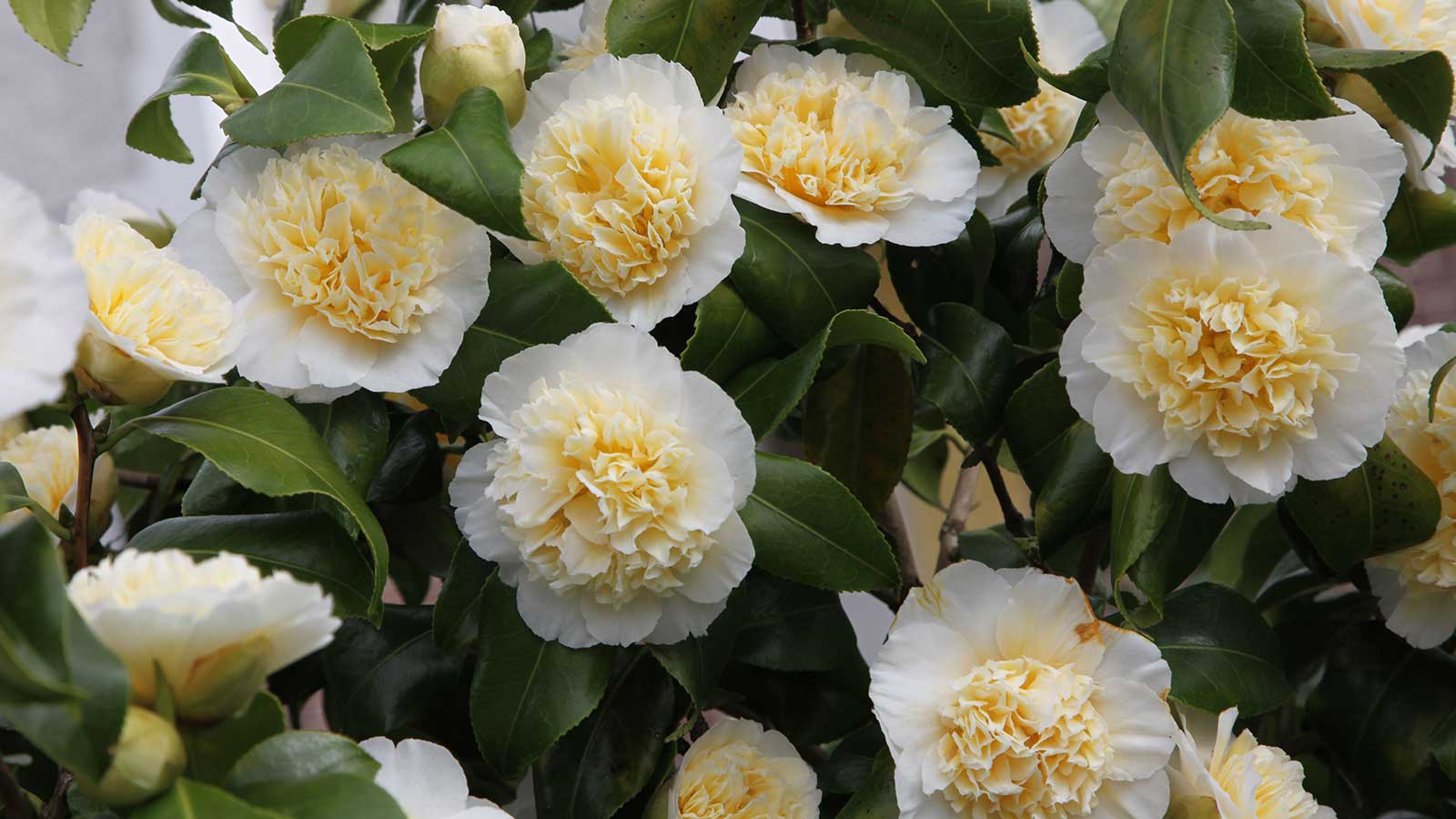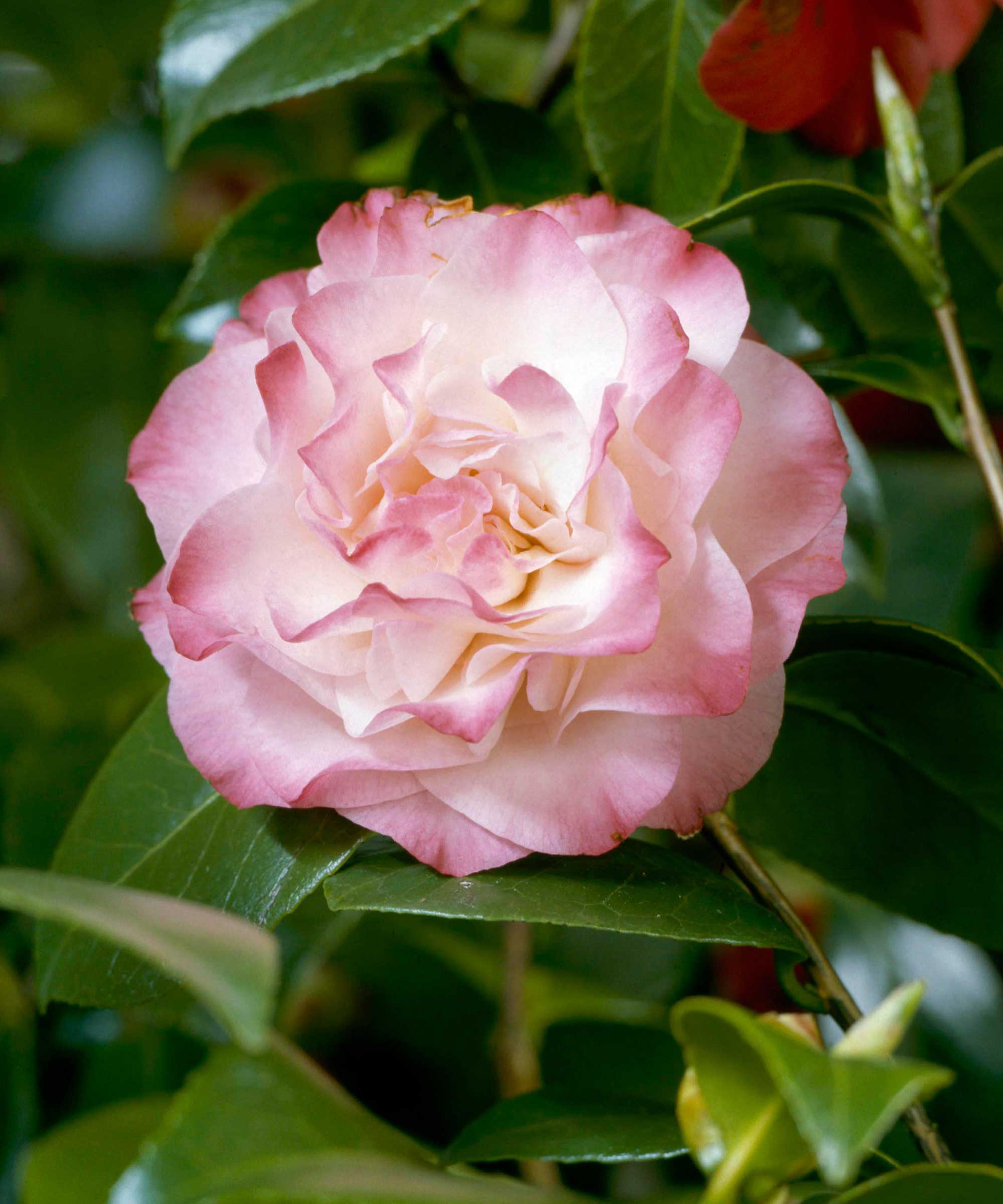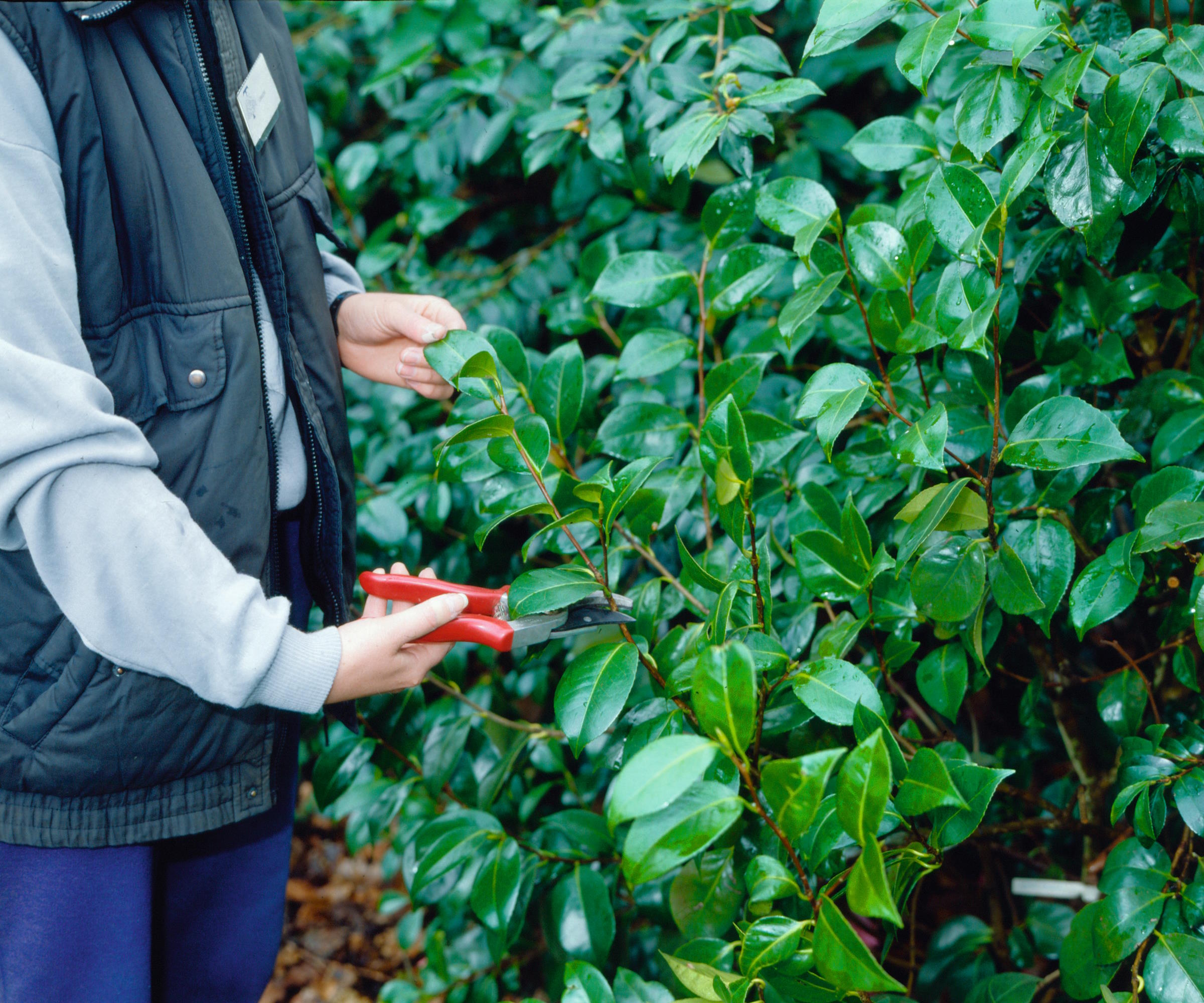Camellia problems – and how to combat them when growing these stunning shrubs
Our round-up of common camellia problems will help you keep these winter-flowering plants healthy


Camellias are one of the first flowering shrubs of the season, and provide our yards with a much-needed color blast in winter. Camellias are stunningly beautiful, but they can be a bit temperamental and like their growing conditions to be just so. Even the most experienced gardener can come across camellia problems. Luckily, these can be remedied if you've got the know-how.
There are a few things to look out for, such as pest damage, yellowing leaves, and a lack of blooms.
Our guide explains the key camellia problems you may come across, so you can identify and treat them quickly should they appear - as well as prevent them from happening to begin with.
5 common camellia problems to look out for
Keep your winter-flowering shrub blooming and healthy with this expert advice.
1. Pest damage to camellia leaves and buds

Like many garden plants, camellias will fall foul of the usual array of pests including mealybugs, aphids and scale insects. Treat them with an organic pesticide or, even better, by encouraging garden birds and predatory insects into your yard to do the job for you.
If you've noticed your shrub shedding its leaves, vine weevils may be to blame. Camellias growing in containers are also threatened by vine weevils, small brown beetles that chew distinctive notches into the edges of plant leaves. However, it is their larvae that do the most damage - they live in the compost and eat roots, often causing plants to fail and die.
First off, you'll need to examine the roots. If you discover small dirty-white grubs with orange heads, then vine weevil is the cause of your camellia’s plight. The good news is that when the grubs have died, your plant will make fresh roots.
Design expertise in your inbox – from inspiring decorating ideas and beautiful celebrity homes to practical gardening advice and shopping round-ups.
'They can be treated with insecticides such as this vine weevil killer, available on Amazon,or more effectively, with nematodes that are widely available online and in garden stores,' says Ruth. 'These are microscopic parasitic worms that only attack the pests they have been developed for, so they can be watered onto the container’s potting soil and are safe to use as they won’t harm pets, wildlife or beneficial pollinating insects.'
Vine weevils aren't the only intruder to look out for, however. If you've spotted black, sooty markings on the leaves of your camellia, then scale insects or aphids are probably the cause. These feed on sap and can seriously debilitate growth and vigor. The substance, known as honeydew, that they excrete is what attracts the sooty mold.
If the problem is only seen in small areas, you can try wiping it off with a damp cloth. Otherwise, try spraying the plant with a natural insecticide such as Neem Oil, available on Amazon.
Deer can also cause camellia problems. If you've noticed flower buds disappearing overnight, they may have been grazed on by these interlopers. You can spray the bushes with dedicated deer deterrent formulas. However, if they're truly proving to be a pain, it might be worth swapping out your shrubs for deer-resistant plants, instead.

Ruth Hayes is an expert gardener, and formerly gardening editor of Amateur Gardening magazine. She is horticulturally trained, with a qualification from the Royal Horticultural Society, and now regularly shares her expertise with Homes & Gardens.
2. Yellow leaves from nutrient deficiency

For plants to thrive, they need to be in the correct place, so things to consider are always soil type, exposure to the elements and light.
If your camellia's leaves are turning yellow, chances are it is suffering from nutrient deficiency, often made worse by the wrong type of soil. Camellias need a slightly acidic soil – if the soil is too alkaline the leaves tend to be small and yellow between the veins.
Fertilizing camellias will give them a boost and help restore shrubs to good health. The best time to feed camellias is in mid-spring, as the plant is coming back into growth after a winter dormant period.
Apply a balanced fertilizer, or one designed for trees and shrubs, before mulching.
Note that watering plants can impact the soil's pH, especially if you use tap water. If you can, try to harvest rainwater using a water barrel, or rain chain, as this will be beneficial to your plants, not to mention a sustainable gardening method.
Also, bear in mind that pruning camellias – especially when reducing branches towards the bottom – can reveal more soil which makes it easier to fertilize and mulch the plants.
3. Failing blooms or bud drop

'If you plant your shrub somewhere where it is not happy, you may find it failing to flower satisfactorily, losing its buds before they unfurl into the trademark beautiful flowers,' says Ruth Hayes.
'Bud drop can be caused by dramatic change in temperatures, such as extreme fall temperatures that scorch developing buds, followed by freezing winter temperatures,' she adds.
If you have you noticed the buds on your camellia turning brown before they bloom, low nighttime temperatures will also be the probable cause.
If this has already happened to your shrub, the best thing to do is to remove the damaged buds and feed the plants with sulfate of potash. Apply it monthly from mid-spring until early fall, and water it in if the soil is dry. It will toughen tissue and help to make your shrub more resilient to frosty nights.
In the future, you can protect plants from frost by draping the bushes with several layers of fleece when a clear evening sky heralds a sharp drop in temperatures later on. This can be removed in the morning.
White-flowering types of camellias are less hardy than red and pink types and therefore more susceptible to frost damage. Young foliage can also be affected by frost and turn brown as a result.
4. Camellias not flowering due to a lack of water

If your camellia hasn't succumbed to frost damage but the buds still aren't opening as expected, a lack of water could be to blame.
'Camellias like their soil to be just damp, so overwatering or not giving enough moisture can also cause flowering to fail,' says Ruth Hayes.
If they are starting to fall or do not look fat and healthy, this may be a result of the soil being too dry when the flower buds were being set. So, be sure to water the plants thoroughly and regularly throughout late summer and early fall – our tips on watering plants while on vacation will come in handy if you're planning a trip away.
5. White growths caused by camellia gall

Camellia gall is a common fungal disease that results in large, white, unsightly growths on leaves that appear in early summer.
They can look rather alarming, as they can grow up to 6in in length. However, they're not a cause for serious concern as they won't damage the plant long term.
Cut them off and destroy them as soon as possible. If spores have appeared, try to enclosing the gall in a plastic bag first to avoid it spreading to other plants.
'The most common camellia disease is petal blight, a fungal disease that only affects the flowers,' says Ruth Hayes. 'Treat it with a fungicide, and make sure you clear up any fallen affected leaves, disposing of them in the trash and never adding them to the compost heap as this can spread the disease spores.'
FAQs
Are camellias drought tolerant?
No, camellias cannot tolerate drought or waterlogged conditions. Their soil should be kept moist throughout the year. If your soil tends to dry out, a mulch of bulky organic matter in early spring over the whole root zone (which probably extends as wide as the branch system) will be beneficial. Avoid it coming into contact with the stems.
Conversely, if the soil is waterlogged, move the shrubs into an area with better drainage, adding plenty of grit around the root system.
By paying attention to the potential issue, it should be fairly straightforward to nurture your camellia back to full health and take advantage of its showy, uplifting blooms in late winter.

Holly started writing about gardening five years ago, and she is a regular contributor to Homes & Gardens. She has also written many gardening features for Woman & Home and Real Homes, too. She has previous experience as a professional gardener, where she helped to plant and maintain private gardens. Holly has also looked after allotment plots over the years and loves to grow her own flowers and veggies from seed. In her spare time, she enjoys visiting local gardens, botanical drawing, and tending to her ever-growing collection of houseplants.